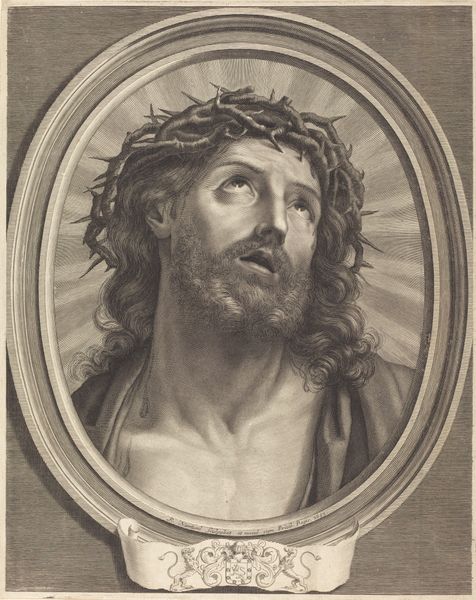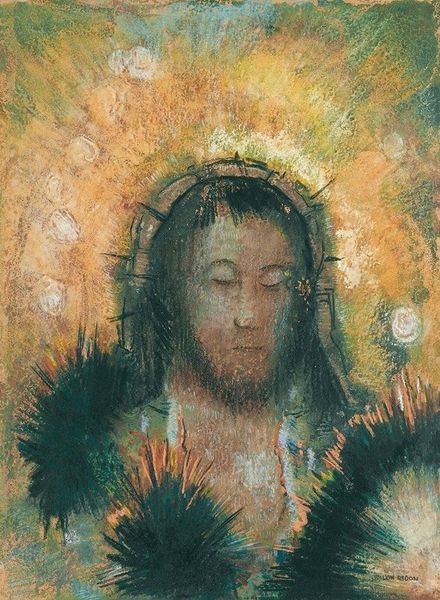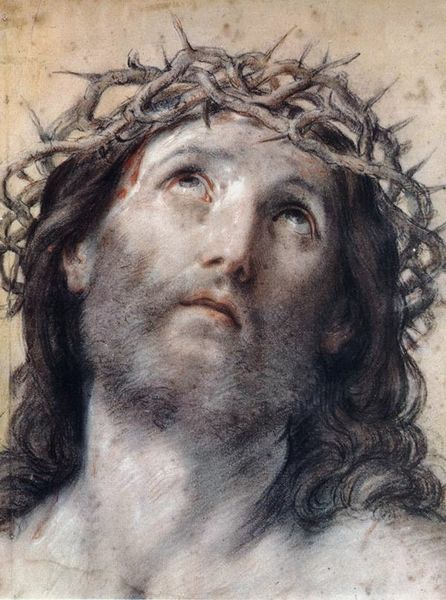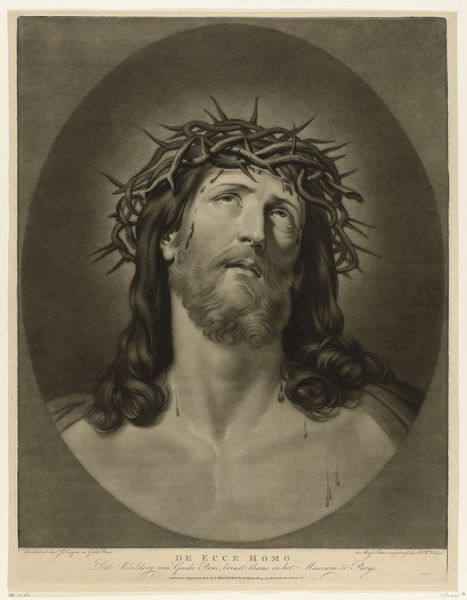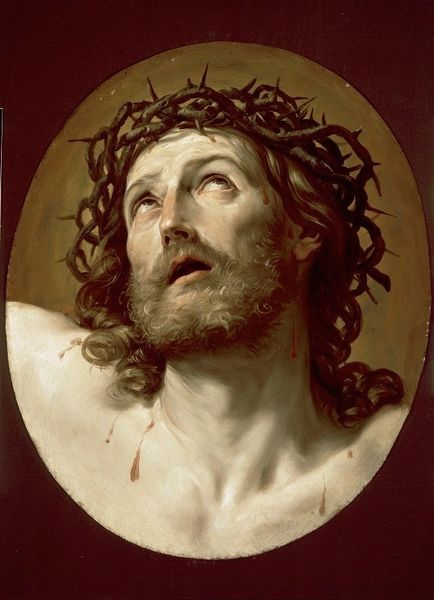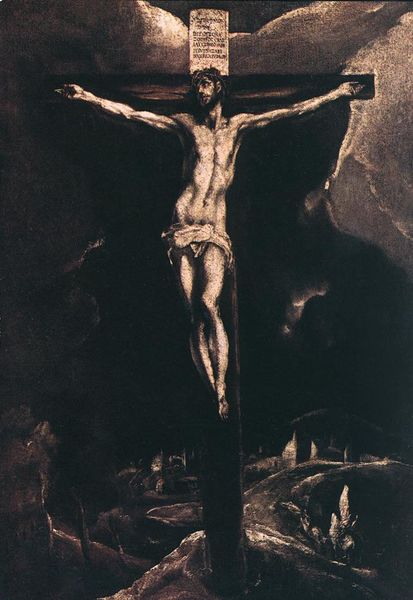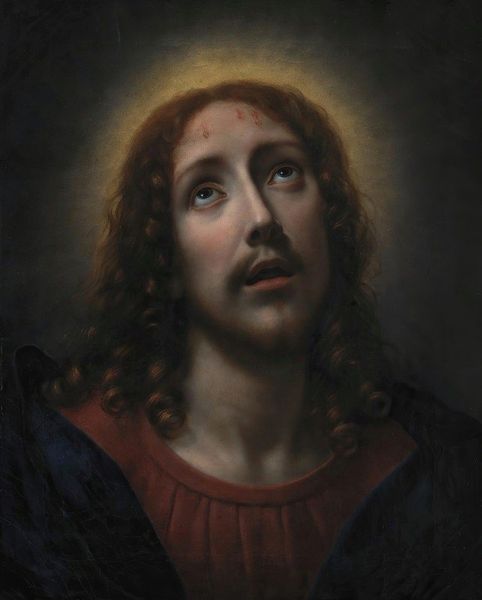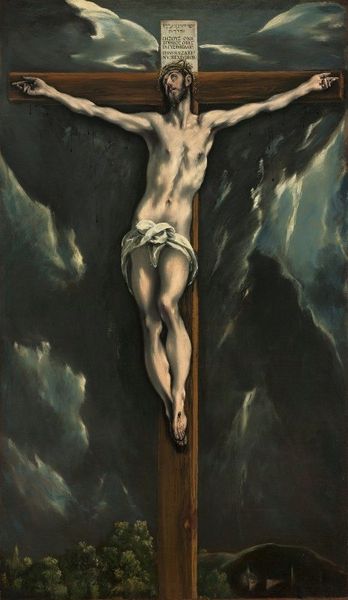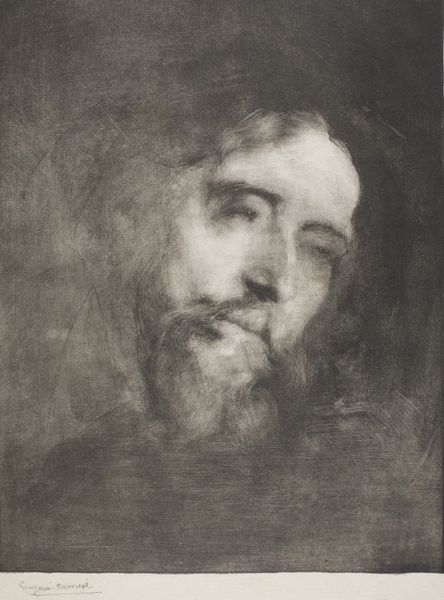
Christ 1900
0:00
0:00
konstantinosparthenis
National Art Gallery (Alexandros Soutzos Museum), Athens, Greece
painting, oil-paint
#
painting
#
oil-paint
#
neo expressionist
#
symbolism
Dimensions: 200 x 200 cm
Copyright: Public domain US
Editor: Here we have Konstantinos Parthenis’ “Christ,” painted around 1900. It's an oil painting and quite striking – the soft, almost hazy rendering of the figure is what grabbed my attention, creating this otherworldly feel. How would you interpret this work? Curator: Well, focusing on the materiality, consider the oil paint itself. The artist's manipulation of it – thin washes, blended to almost erase the mark of the hand – suggests an almost spiritual de-materialization, a kind of dissolving of earthly form. Do you see how the application serves to idealize rather than realistically depict? Editor: Yes, definitely. The smoothness contrasts so strongly with the brutal subject matter. How does that tension work, do you think? Curator: I see that tension residing in the act of production, the artist almost trying to reconcile labor and religious ideal, where craft transforms something inherently human to the ethereal. The oil paint is not presented for its textural value or for its "thingness" as in much modernist works; rather it becomes a conveyor to reach the spiritual subject of "Christ". What does it say about labour in Athens around 1900? Editor: So you’re saying the painting points to its own production but kind of hides it at the same time, mediating labour and idea. It must be placed somewhere between the artist’s vision, labour conditions in Athens, the social expectations in Greece during that period. The materiality and its manipulations offer insight into its production process and even perhaps the historical period. Curator: Precisely. Considering these factors moves us beyond a simple iconographic reading and opens the door to broader social and material understandings of art production. Editor: This new materialist perspective on how an artwork like this comes into being offers so many insightful considerations, transforming what otherwise could have been merely decorative. Curator: Indeed, understanding art through the lens of material and production reveals its connection to wider social and cultural spheres.
Comments
No comments
Be the first to comment and join the conversation on the ultimate creative platform.


